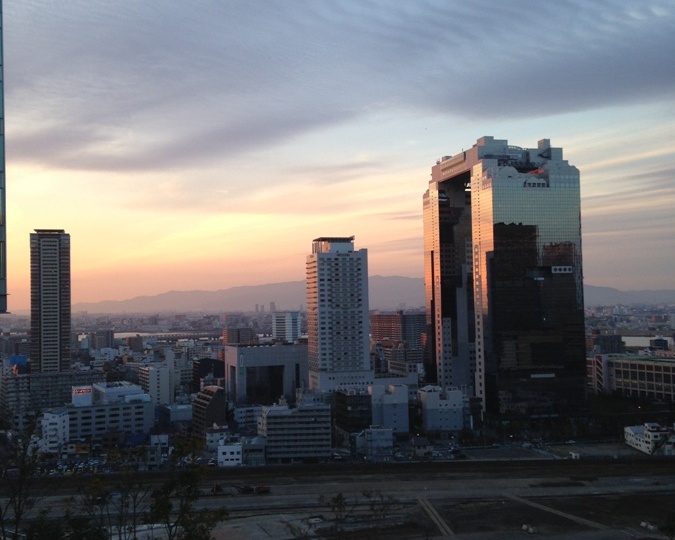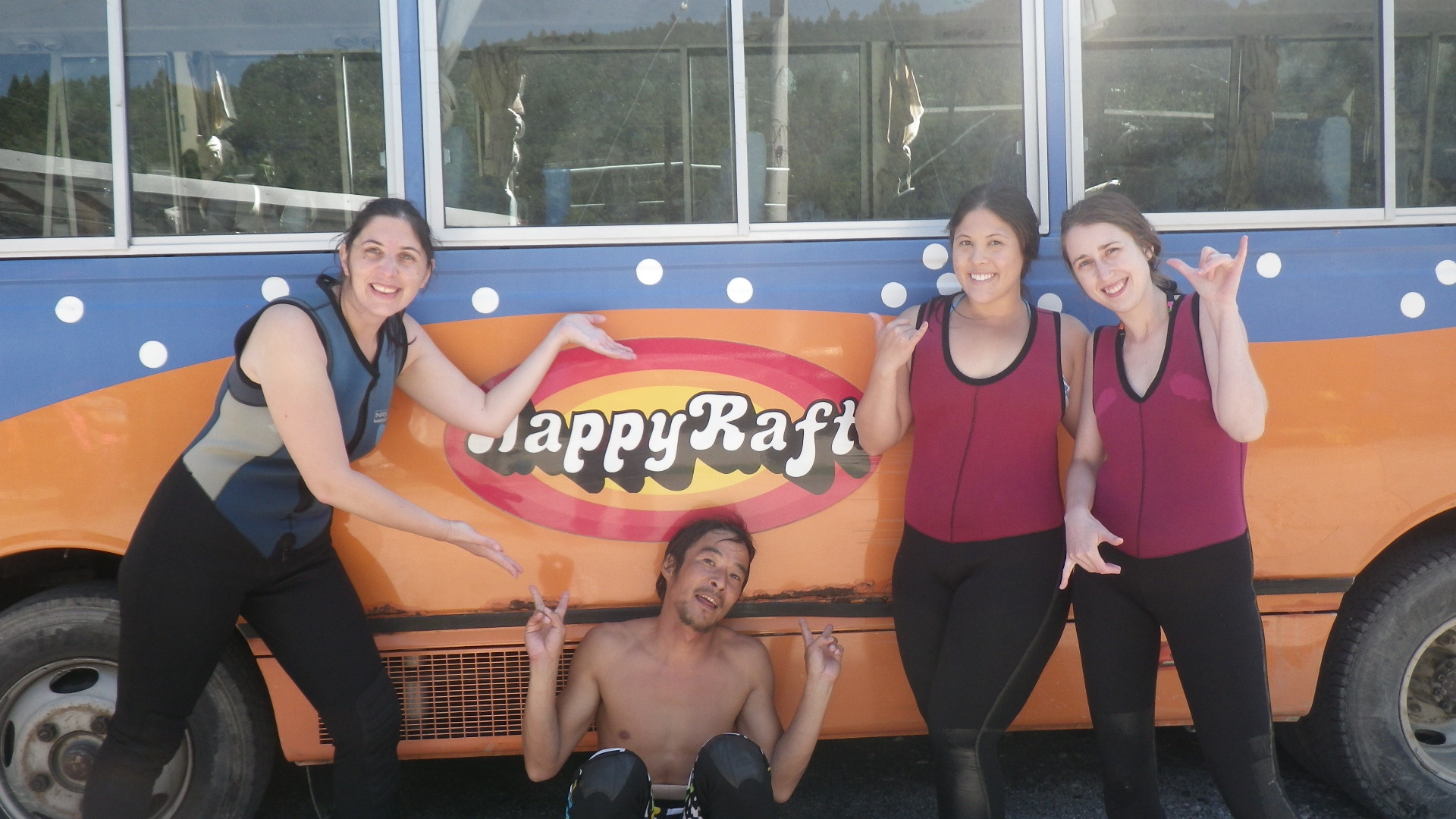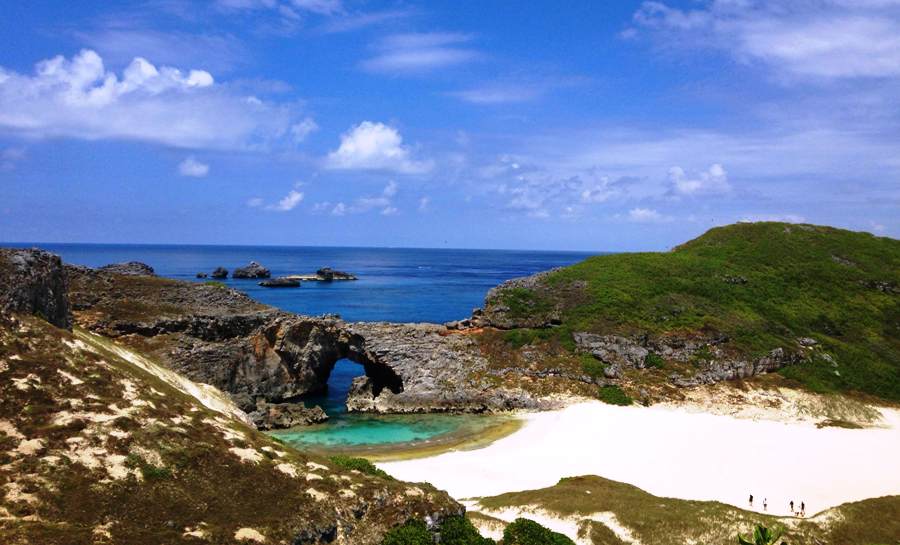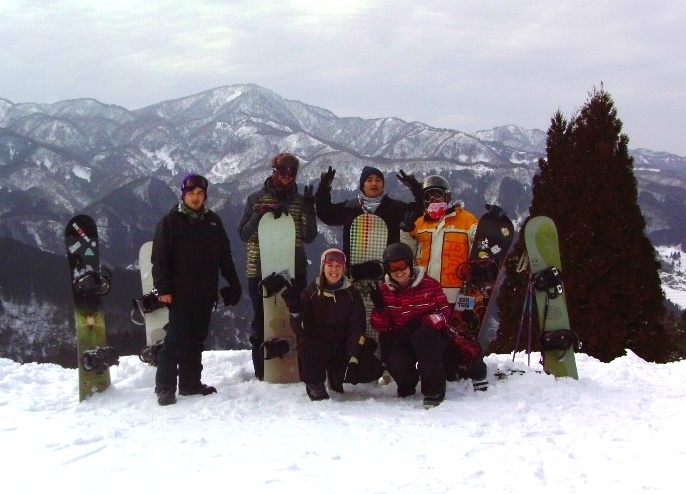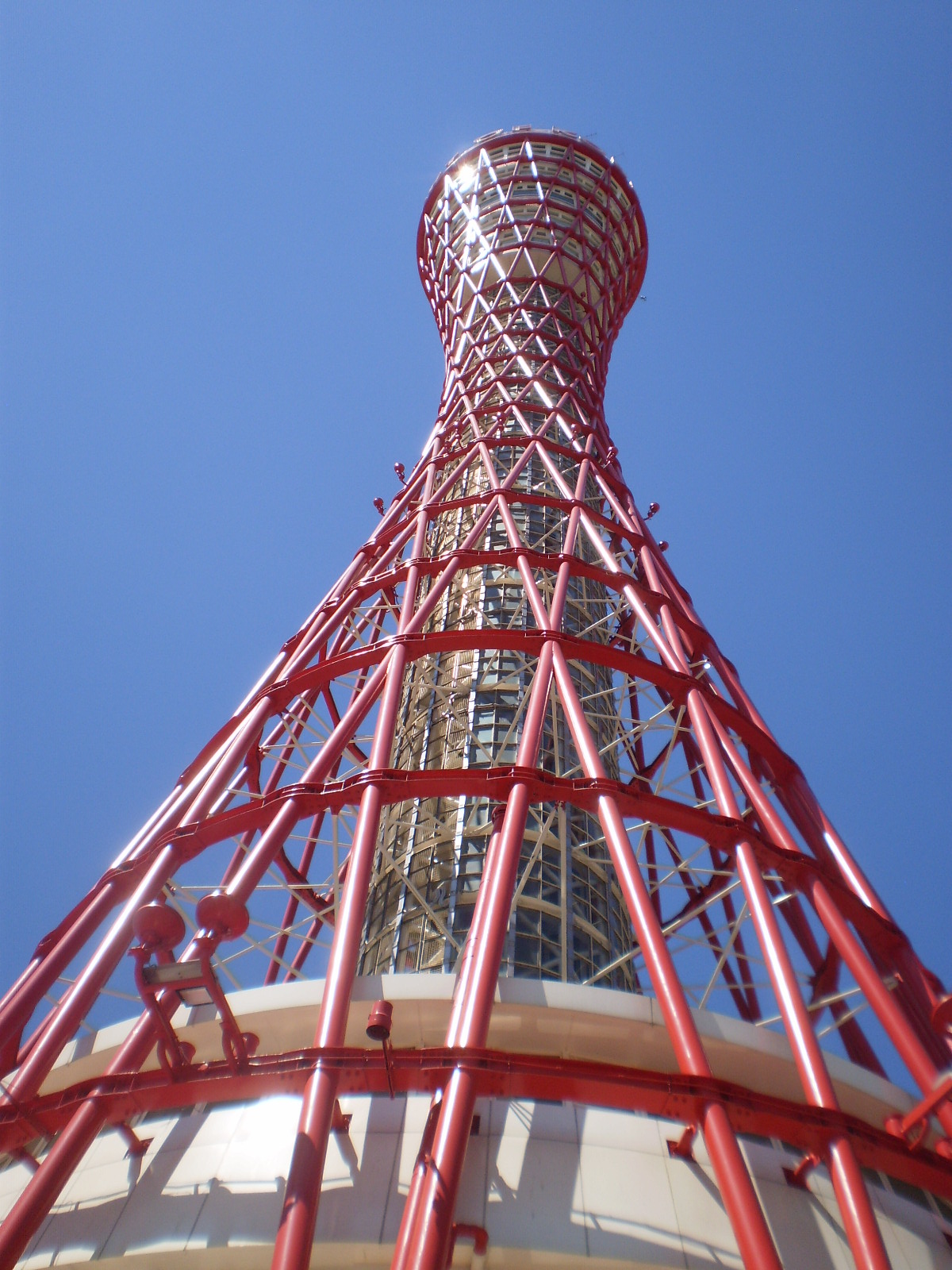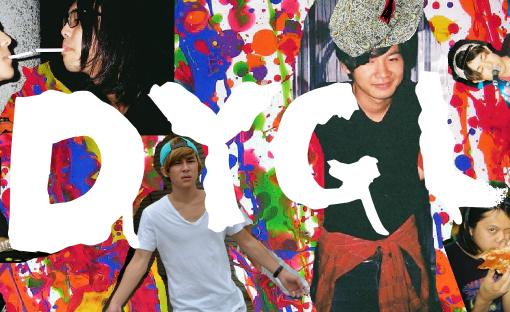Osaka Prefecture All the Shades of Urban Japan
My name’s Joseph Baietto. I’m originally from New York City. I’m currently on my second year of JET, eagerly heading into my third. I teach at a junior high school in Shijonawate-shi, on the western edge of Osaka Prefecture, and once a week I teach at one of two elementary schools.
Why did you apply for the JET program or come to teach in Japan?
I majored in Japanese in college and, after studying abroad at Kansai Gaidai for a single semester, knew that I had to come back. The JET program seemed like an excellent first step, and it is, though it’s made me very grateful for the three semesters of education classes I took before settling on Japanese as a major!
How did you end up in your prefecture? Was it a preference of yours?
Haha, friends I studied abroad with who are planning to apply for JET always ask me that. I have no idea how I got placed in Osaka, though I’m incredibly glad that I did. I did list it as a preference when I applied, but so did several of my other friends and they were all placed elsewhere (a few ended up in Hyogo though, so not too far!). Maybe it’s because I let some Kansai-ben slip during the interview? Who knows!
What has been your favorite memory in your prefecture so far?
They’ve all been pretty great. I’ve had very few bad days since coming here, and I think that’s thanks in part to the Osaka lifestyle (laid back in all things but business). I suppose I have three:
- Going back to the bar I was a regular at during my time as an exchange student. That place was like a second home and it’s great to go back whenever I want.
- Any big birthday party for someone in my group of Japanese and foreign friends. They’re always rowdy, bilingual, and completely heartfelt.
- Walking down the streets of Shinsaibashi during a heavy night rain in September or October. The lights were all reflected from the pavement, and the hosts and hostesses and touts and karaoke shrillers were all in full swing. Stepping in and out of the street to dodge passersby while juggling an umbrella and a bag and listening to see if there’re any good deals at an izakaya, it was just one of those fun moments of connectedness that you can find in cities.
Is there a “best†time to visit your prefecture?
NOT the summertime. The heat and humidity are absolutely unbearable. With all of the things to see and do, walking around gets exhausting pretty quickly.
Autumn and spring are my favorite seasons here, but for visitors, I would say spring is best, especially early April and sakura season. The weather warms up a little earlier because we’re in a basin surrounded by mountains and, even though Osaka’s mostly urban, there are cherry blossoms everywhere. Autumn is great too though, especially if you want some hustle and bustle and human warmth to drive the first chills of winter away.
What are your “Must Do’s†for visiting JETs?
There are so many. One thing to mention before I start listing things ad infinitum though: Osaka is a big city, in the middle of a populous urban prefecture, so there’s definitely something for everyone. The JET community has incredibly varied interests, and pretty much everyone I know has a hobby, a group of people, or even just a favorite bar that they feel absolutely at home with. With that, here we go:
- Osaka Station, in Umeda, is probably going to be the point of entry for a lot of people visiting, and what a port it is. It’s built between three towering skyscrapers full of shops, so there’s a lot to see right off the train. There are a couple of cafes with terraces over the platforms that are a lot of fun (as long as you’re not afraid of heights and it’s not too chilly). Outside the station, Umeda is full of things to see: malls galore, including Hep5 with its inside, outside Ferris Wheel (I’ve heard from a couple people, however, that the ride is rumored to be cursed, and that if you ride with a loved one your love is doomed to fail. I’ve never been able to nail it down, but hey, why take chances?), a veritable avalanche of shops and boutiques (both luxury and regular brands) and lots of places to eat. Grand Front Osaka, a massive new—mall isn’t even the word, perhaps palace of capitalism is better—is fun to walk through, as it’s slick, modern, and full of things to buy. The basement also has lots of eating options. The Umeda Sky Building is also nearby and a popular stop, with a towering observation deck and open-air escalators.
- Though I don’t go to Umeda often (the prices are a bit too high for me, and the crowds, while fun for people watching, aren’t always conducive to serious shopping), there’s some fun stuff that I like to do. First, there’s a cooperative farm/garden on the roof of one of the buildings that makes up the station. If you ride the escalators up from the station to the movie theatre on the upper floors, then climb some stairs nearby (they’re marked in English and Japanese), you’ll find it. Absolutely excellent view, and rarely crowded.
- Also, I highly recommend going underground! Almost every building in Umeda, and stretching for quite a ways south, is connected by a subterranean labyrinth shopping arcades and pedestrian walkways. Walking these hallways, getting lost, and trying to find my way back is one of my favorite things to do. A fun route is from Osaka Station to Kitashinchi Station (there are tons of signs).
- Kitashinchi, just south of Umeda, is a fun place to go at night. New bars are always opening and closing, so there’s usually something new to try. It can be a bit Japanese-intensive, but don’t let that stop you.
- Nakanoshima is the central government district of Osaka, with the City Bank, City Hall, and lots of assorted offices, company branch offices and headquarters, and financial institutions. Literally translating to “Central Island,†Nakanoshima is a thin island with very pretty landscaping and walking paths. The eastern end is taken up by a large rose garden. Historic- and civic-minded people might enjoy admiring the architecture of the various government buildings (especially the Osaka Central Public Hall, constructed in 1911 in sort of a Beaux Arts style). It’s one of my favorite buildings in the city, as the exterior and interior are both beautiful, and it often plays host to tango and salsa dance meets. The Museum of Oriental Ceramics is also located on the island. I like this area a lot, as it’s crowded but quiet at the same time, and the towering grids of skyscrapers remind me the most of Midtown Manhattan back home. During sakura season the long parks along the river absolutely explode with blossoms, and are incredibly pleasant to walk along. A Japanese friend told me that, in olden days, Nakanoshima was home to the city’s samurai class, which is why, traditionally, it is still a quiet area, despite being a busy government and commercial hub.
- Shinsaibashi/Amemura are home to the beating heart of Osaka’s nightlife, and are where lots of ALTs go for a fun night out on the town. The twin districts (separated by the main thoroughfare of Midosuji, which runs all the way north to Umeda) are also home to Dotonbori Canal, the sprawling Shinsaibashi shotengai, and the famous landmark of Glico Man (recently re-done with more modern lights). Dotonbori, the street running parallel to the canal, is full of restaurants that have giant representations of their food hanging out front (the giant moving crab that Osaka is also famous for is located here. There’s also giant sushi, gyoza, cows, blowfish, and more). In addition to the nightlife, the shopping here is pretty good, and the eating is absolutely unbelievable. I spend a lot of time here, as its central location makes it easy for ALTs to congregate. If you’re looking to try okonomiyaki and takoyaki, Osaka’s specialties, this is the place to do it, as there are tons of street stalls and tiny restaurants. The rest of the world is represented here too: pizza, Spanish tapas, French cuisine, Korean barbeque, and American diner food.
- Midosuji is the huge thoroughfare that bisects the two districts. Underneath it, the Midosuji subway line runs from Umeda to Tennoji. If you’re looking to drop some money on upscale goods, Midosuji is your destination, with flagship branches of Gucci, Versace, Chanel, Louis Vuitton, and more. The Daimaru Department Store is also located here, on the Shinsaibashi side. The building is architecturally beautiful and is well worth a peek inside. Additionally, if you’re in the area at 10AM and want to feel pampered, line up outside and wait for them to open the main doors. As you walk in the entire floor staff will bow and say “Good Morning!â€
- Amemura, or ‘American Village,’ is to the west of Midosuji and is home to a large number of foreign-clothing shops, bars, restaurants, and clubs. It has a slightly more international feel than its twin. You’ll find a lot of English-speakers here, both tourists and ex-pats alike. At the center of it is Triangle Park, where skateboarders, rappers, dancers, and all manner of young urban denizens come to hang out. It also has a trash can, a fixture of almost unicorn-like rarity in Japan unless you’re near a convenience store. On Halloween the place is jam-packed with people in costume.
- Shinsaibashi, the Japanese twin of Amemura, is to the east. The concentration of bars and restaurants here is far higher, as they are piled one on top of each other in multistory buildings. There’s also a large concentration of clubs in this area. I tend to use more Japanese in Shinsaibashi than I do in Amemura. Watch out for hosts and hostesses trying to lure you to their establishments.
- North of Shinsaibashi, towards Nakanoshima, is Honamchi. If you’re in the market for cheap kimono or yukata, this is where you want to go.
- Nanba is just south of Amemura and Shinsaibashi. There are multiple shotengai, and it can be considered an extension of the shopping and eating culture of its northern neighbors. There’s also Namba Parks, a large mall complex with impeccably landscaped gardens on the roof. To the east of Namba you’ll find Nipponbashi and Den-Den Town, a district full of computer-supply stores, used-electronics wholesalers, manga cafes, hobby shops, arcades, and a large concentration of Osaka’s maid cafes.
- Tennoji/Shinsekai can be found if you walk a long way south from Den-Den Town (faster to take the train). Tennoji is the name of the broader district, home to Shi-Tennoji Temple, the Tennoji Zoo, and Abeno Harukas, the tallest building in Japan. Shinsekai is a district within Tennoji. It’s

by Scott Paterson been an entertainment area for more than 100 years, and is the location of Tsutenkaku Tower, an old, faded monument of Osaka’s glory. More deliciously, it’s the place where you can get the best kushikatsu, or fried things on sticks. Restaurants in Shinsekai will deep-fry anything, and do it cheaply. If you feel like gorging, Shinsekai is a good place to go. During Oktoberfest season there’s a big one in Tennoji Park
- A word of caution—Shinsekai is considered by many natives of Osaka to be the most dangerous part of the city, due to its high concentration of pachinko parlors, arcades, standing bars, and, most importantly, adult entertainment establishments. This is, of course, dangerous by Japan standards, but still, keep your wits about you. To put it in perspective, I go down to Shinsekai to keep my ‘urban awareness’ skills, necessary for life in New York, up to snuff. You’re not going to be mugged or assaulted, but you can’t move with the careless, happy-go-lucky attitude that a lot of tourists in Japan have. Still, it’s a great place to visit, and, for a place named “The New World,†it’s a bit of a sad and dusty monument to the last couple years of the Bubble Era.
- Kyobashi/Osaka Castle. One of Osaka’s most famous sights is its eponymous castle, constructed by Toyotomi Hideyoshi during his quest to unite the country under his rule at the end of the Warring States Period. It’s an imposing sight that sits at the center of Osaka Castle Park, a sprawling pentagon of greenery with gardens, ponds, the moats and battlements of the castle itself, and even a small forest. There are also sports fields and a few concert venues, as well as a huge number of ume and sakura trees and plenty of places to picnic during hanami season. The castle was bombed during the Pacific War, so the current castle is a concrete reconstruction that houses a large museum. Honestly, even as a major history buff I can take or leave the museum portion. The interior makes no concession to authentic design, there is very little translation in some of the exhibits, and the amount of historical artifacts was low, in my opinion (though there was a copy of the famous ‘Order Disarming the Peasantry’ that banned peasants from carrying swords. That was incredibly cool to see). The exterior of the castle and the surrounding park, however, are absolutely fantastic and I highly recommend them. There are several shrines on the castle grounds, and the massively imposing castle walls must be seen to be believed. You can walk the battlements and admire the city from multiple angles, as well, and the white-and-green castle looming over you as you walk slowly towards it creates a delightfully foreboding atmosphere. Additionally, there’s a large gift shop near the castle that lets people stock up on omiyage, or, if they so prefer, buy a couple of swords and duel around the grounds (yes, swords are available for purchase, both plastic and metal ones). Kyobashi, the district the castle is in (Kyobashi Station is one of the major transit hubs, and a main access point for the castle) is another fun area to wander around. According to another Japanese friend, during the war, Kyobashi was one of the few areas of the city that escaped immolation during the bombings, and so it became the location of the city’s black market. Because of this, Kyobashi still has some grit amongst the glamour, with lots of yakiniku restaurants, pachinko parlours, and adult entertainment venues. It’s a fun place to wander around at night, noisy and brightly lit. There are also upper-class eateries and malls in the area, including an interesting ‘sunken mall’ called Comms Gardens that is set below street level.
That about covers it for all of the really famous areas that I know. Below is a short list of individual sights that are worth it.
- Osaka Aquarium Kaiyuukan: the single best aquarium that I’ve ever been to. Chicago’s Shedd Aquarium comes close, but Osaka’s whale sharks carry the day.
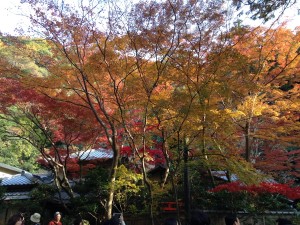 Minoh Park: located in the north of the prefecture, it’s part of a chain of national parks that stretches all the way to Tokyo. In the autumn it’s one of the major centers for kouyou, foliage viewing. It’s beautiful year round, however, with a winding trail that follows a river gorge until it reaches a large waterfall, the water from which is used to make the delicious Minoh Craft Beers (I recommend the Wizen and the Stout, both of which can be purchased at shops along the trail).
Minoh Park: located in the north of the prefecture, it’s part of a chain of national parks that stretches all the way to Tokyo. In the autumn it’s one of the major centers for kouyou, foliage viewing. It’s beautiful year round, however, with a winding trail that follows a river gorge until it reaches a large waterfall, the water from which is used to make the delicious Minoh Craft Beers (I recommend the Wizen and the Stout, both of which can be purchased at shops along the trail).- The National Museum of Art, Osaka: home to a large permanent collection, the museum also does temporary shows. It’s located on Nakanoshima, and is almost completely underground. Well worth a visit (the temporary show I went to last summer, Nostalgia and Fantasy, was out of this world).
- Tenma, between Kyobashi and Osaka Station on the JR Loop Line, has a sprawling restaurant district, full of small and open-air eateries. The Minoh Brewery runs a beer bar here called Beer Belly, and there’s excellent Spanish and Mexican food to be found as well. It’s a lot of fun to just jump in and get a little lost.
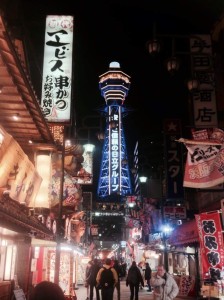
If I may write just a little more about seeing the city: for glitz and glam, go to Umeda, Shinsaibashi, and Tennoji. If you want gritty urbanism or old, more traditionally Japanese sights, head to Amemura, Kyobashi, Shinsekai, or Shinsaibashi at night. Also, it’s my opinion that the whole city looks better at night, and even more so during or after a heavy rain. That’s just me though.
What do you feel is unique to your prefecture, something JETs can’t find anywhere else?
Osaka has big-city cred, but the people here are possessed (for the most part) of a more laid-back attitude than in other parts of the country. They’re a little friendlier than in other parts of the country, much more willing to start a conversation with you at a bar, or restaurant, or sometimes on the train or street. They’re great fun to talk to, especially members of the older generation you’ll find running small shops.
Also, the food here is amazing. Skip the fast food, skip the big Japanese chains, and skip whatever hip new place the Japanese talk and travel shows are recommending. Find a food stall, or duck into a hole-in-the-wall place. There’s absolutely unbelievable food everywhere in Osaka.
Finally, and at least for me, I miss the grit and tough guy attitude of New York City. Osaka has that, or a ‘lite’ version of it, in some places, and it’s really refreshing to walk around a big city with a little bit of litter and graffiti. Again, maybe that’s just me.
Anything else you want to add?
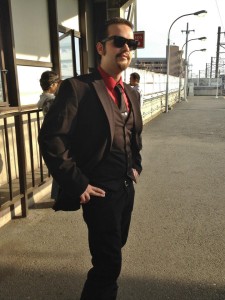 Yes: as I touched on above, skip the fast food, skip the chains, and find somewhere small, out of the way, and independent. Same rules apply if you’re going to go out drinking: skip the foreign-friendly bars and go somewhere Japanese-run and frequented by Japanese people. The service is usually better, there are bars with a kaleidoscope of different themes and specialties, and if you hit it off with another customer or regular they might even buy you a drink! Shinsaibashi and Namba are great places for finding bars like this.
Yes: as I touched on above, skip the fast food, skip the chains, and find somewhere small, out of the way, and independent. Same rules apply if you’re going to go out drinking: skip the foreign-friendly bars and go somewhere Japanese-run and frequented by Japanese people. The service is usually better, there are bars with a kaleidoscope of different themes and specialties, and if you hit it off with another customer or regular they might even buy you a drink! Shinsaibashi and Namba are great places for finding bars like this.
Joe Baietto
.
